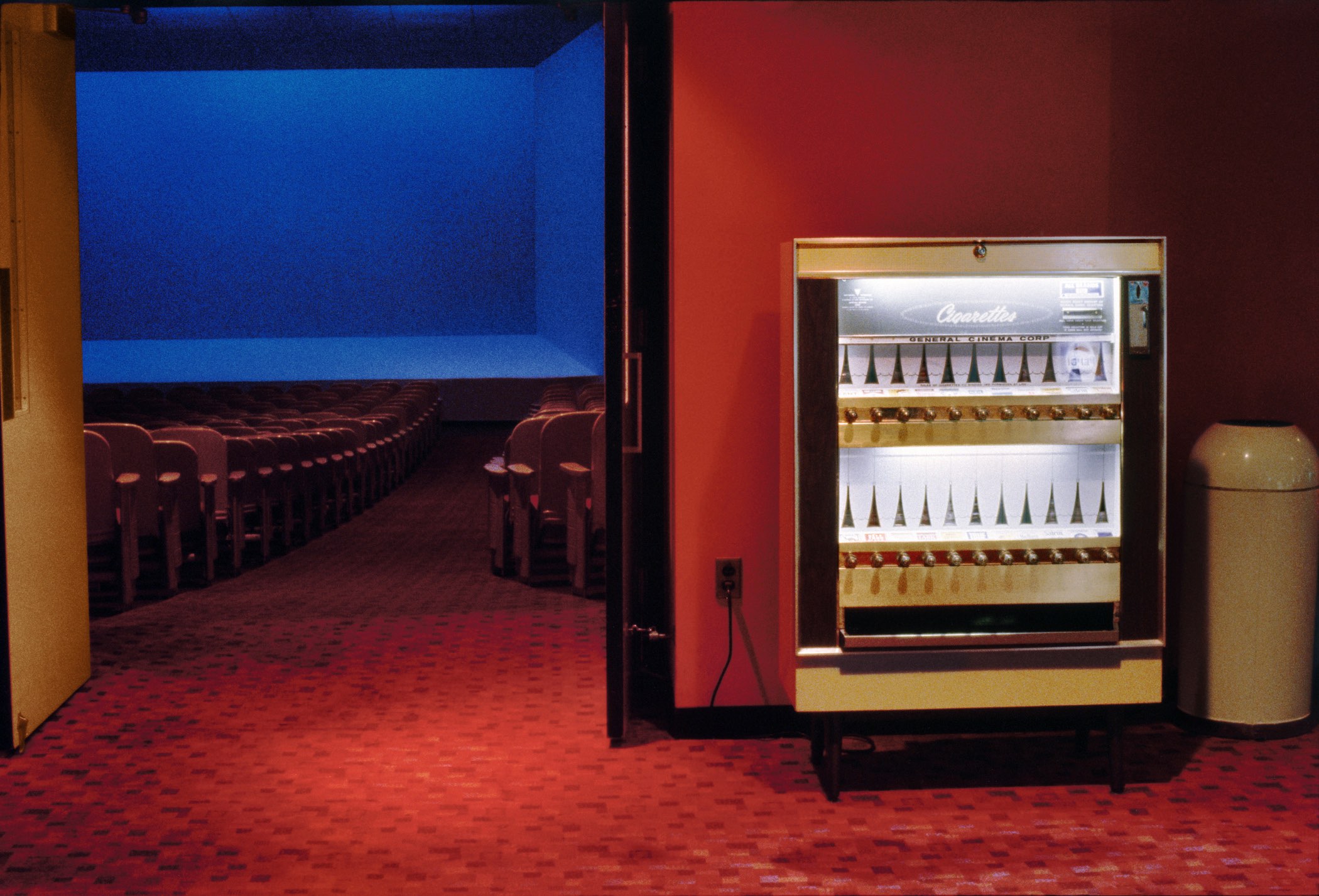Vintage shots of Boston’s red light district
- Text by Miss Rosen
- Photography by John Goodman

In the early 1970s, John Goodman set up his first photography studio on the edge of the ‘Combat Zone’, Boston’s official red-light district. The area got its name from the way it blended violence and vice, attracting soldiers and sailors on shore leave to its many strip clubs, brothels and porn theatres.
“The area was compressed, and the streets were full of people,” Goodman remembers. “It was edgy and unpredictable. Lit with neon, the ‘Zone’ always felt like it was night time. As a young photographer walking through the streets daily, I became part of its fabric, which gave me a certain access.”
It was the perfect training ground for Goodman, as a young photographer eager to delve into the gritty truths of the human condition.

John Goodman, Window #4, 1978.
Having studied with photographer Minor White, then a professor at MIT, Goodman learned the power of presence and awareness. “I attended classes and participated in a nine-month workshop that took place at his house every Saturday in Arlington,” he says. “Life at the house was disciplined, austere, quiet and intense. If it was your turn to wash the dishes then you were to totally focus on the task at hand; idle chatter was not part of the process; meals were silent.”
White showed Goodman how to find stillness in a chaotic world, and allow it to be his guide. “He taught me how to recognise something beyond what was just in front of my camera,” Goodman says. “Minor believed that the act of making an important photograph feels very much like an electrical impulse coursing through your body and heightening your awareness.”
As a young photographer, the street – particularly the Combat Zone –became the perfect environment for Goodman to discover his voice. “I became fascinated by the vibrancy of the city and intoxicated by a newfound freedom,” he says. “I came to understand the importance of establishing a connection with the subject while disappearing into the space.”

John Goodman, Stuart and Tremont Streets, 1974.
By the 1980s, Goodman had moved into an industrial loft where he could keep everything he produced, amassing a massive archive of his life as a photographer that sat untouched for nearly 30 years.
In 2009, he moved once more, and took this opportunity to peruse the work held in file cabinets that hadn’t been opened in decades. “I was startled and thrilled,” Goodman says of the moment he began to look at his early work. “My memory was re-awakened to the moment I made the photographs. So much came flooding back.”
Now, those long-lost photographs are on view in the John Goodman: not recent colour. “There is something in those places and faces that is relevant to today,” Goodman adds. “It is the recognition of our shared humanity. Although the look and make-up of the city has changed, people remain the same and the trials and tribulations that go along with being human remain constant.”

John Goodman, General Cinema, 1980.

John Goodman, Fenway Park, 1988.

John Goodman, Siegel Eggs / Haymarket, 1973.

John Goodman, Phone Booth, Truro, 1980.

John Goodman, Quincy Gas, 1973

John Goodman, Shop / Combat Zone, 1973

John Goodman, The Other Side / Bay Village, 1973.
John Goodman: not recent colour is on view at Addison Gallery of American Art in Andover, MA, through July 31, 2019.
Check out Huck 69 – The Hedonism Issue in the Huck Shop or subscribe to make sure you never miss another issue. Enjoyed this article? Like Huck on Facebook or follow us on Twitter.
Latest on Huck

Analogue Appreciation: lullahush
Ithaca — In an ever more digital, online world, we ask our favourite artists about their most cherished pieces of physical culture. Today, it’s Irish retro-futurist lullahush.
Written by: lullahush

Spyros Rennt captures connection and tenderness among Berlin’s queer youth
Intertwined — In the Greek photographer’s fourth photobook, he lays out spreads of togetherness among his friends and the German capital’s LGBTQ+ party scene.
Written by: Isaac Muk

The rebellious roots of Cornwall’s surfing scene
100 years of waveriding — Despite past attempts to ban the sport from beaches, surfers have remained as integral, conservationist presences in England’s southwestern tip. A new exhibition in Falmouth traces its long history in the area.
Written by: Ella Glossop

Plestia Alaqad: “Journalists should focus on humanising people”
Huck’s April interview — Having become one of the most crucial and followed voices from inside Gaza in the aftermath of October 7, the award-winning author and journalist is releasing a new memoir, ‘The Eyes of Gaza’, collating diary entries made over the past 18 months. We caught up with her to hear more about it.
Written by: Isaac Muk

The instrument makers taking DIY music to a whole new level
What does it take to construct a modular synth? How do you turn a block of wood into a double bass? Here, four craftspeople explain why they chose to rip up the rulebooks and build their own music-making machines.
Written by: Daniel Dylan Wray

Southbank Centre reveals new series dedicated to East and Southeast Asian arts
ESEA Encounters — Taking place between 17-20 July, there will be a live concert from YMO’s Haruomi Hosono, as well as discussions around Asian literature, stage productions, and a pop-up Japanese Yokimono summer market.
Written by: Zahra Onsori